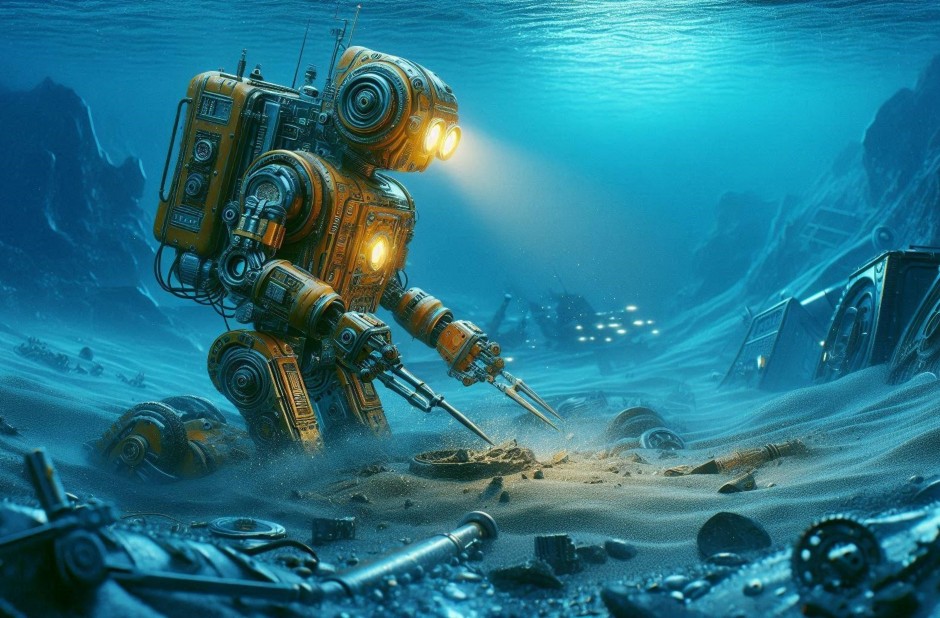In recent years, there has been a significant advancement in the field of Artificial Intelligence (AI) and Augmented Reality (AR). These technologies have become increasingly popular and have the potential to enhance virtual experiences in various fields such as gaming, education, healthcare, and...
Robot Archaeologist Explores the Depths of the Seabed

Modern technology has made it possible to reach new frontiers beneath the ocean’s surface, offering an unprecedented opportunity to uncover hidden treasures from past civilizations. Through the use of cutting-edge devices, researchers can now venture into areas once considered unreachable, bringing long-lost artifacts to light and expanding our knowledge of ancient cultures.
With these advancements, underwater investigations have evolved significantly, allowing for the collection of valuable data and the study of submerged structures that were previously inaccessible. Sophisticated tools are now capable of capturing intricate details, shedding light on what lies deep beneath the water, and revealing historical information that would have otherwise remained concealed.
Exploring the Future of Underwater Archaeology
Advancements in technology have paved the way for a new era in underwater exploration, revolutionizing the way researchers study ancient remnants submerged in oceans and seas. As tools become more sophisticated, the ability to investigate deep underwater sites expands, opening up possibilities to uncover civilizations that have been hidden for centuries. This future promises to change how we understand human history and its connection to the world’s oceans.
Technological Innovations Leading the Way
In recent years, innovations in technology have led to more precise and efficient methods of underwater excavation. Advanced imaging systems, high-definition cameras, and autonomous vessels are enabling detailed scans of submerged environments, helping scientists identify potential sites for exploration. These tools allow researchers to map and document underwater ruins with remarkable accuracy, reducing the risks and challenges once associated with these expeditions.
Collaborative Efforts and Global Impact
As underwater research becomes more accessible, international collaboration between scientists, engineers, and governments is becoming increasingly important. Sharing knowledge and resources allows for the pooling of expertise, accelerating discoveries and creating a more comprehensive understanding of submerged archaeological sites. This collective approach not only helps preserve cultural heritage but also fosters a deeper connection to the global history of human civilization.

The Role of Robots in Seafloor Discoveries
Technological advancements have made it possible to send machines into deep waters, enabling the discovery of hidden artifacts and structures that have long remained untouched. These machines, designed to withstand the harsh underwater environment, play a crucial role in modern investigations of submerged sites. Their ability to navigate challenging terrains and capture high-quality data has significantly expanded our knowledge of ancient civilizations and lost underwater cities.
Through the use of autonomous systems, scientists are able to access previously unreachable locations at great depths, documenting finds with unprecedented precision. These machines provide real-time information, allowing researchers to make critical decisions without putting human lives at risk. With enhanced imaging capabilities, they can uncover intricate details of submerged objects, revealing clues that would have otherwise gone unnoticed by traditional methods.
Uncovering Ancient Artifacts from the Ocean Floor
Underwater exploration has revealed an astonishing wealth of historical objects hidden beneath the waves. These treasures, ranging from shipwrecks to relics of long-lost civilizations, offer a unique window into past cultures. With advanced technology, researchers are now able to retrieve items that were previously beyond reach, expanding our understanding of human history and its connection to the world's oceans.
Advancements in Underwater Retrieval Techniques
Recent innovations in underwater technology have dramatically improved the process of recovering artifacts from great depths. Specialized tools and equipment, such as remotely operated vehicles (ROVs) and advanced sonar systems, allow for more precise excavation of submerged sites. These technologies help scientists locate artifacts with incredible accuracy, bringing to light materials that have been hidden for centuries.
Insights into Lost Civilizations
The discoveries made through underwater exploration have provided valuable insights into ancient civilizations and their maritime activities. From pottery shards to navigational instruments, these items tell stories of trade, migration, and cultural exchange that took place across vast oceans. By studying these artifacts, historians are able to piece together a more complete picture of our shared past, deepening our understanding of human history and its maritime heritage.



